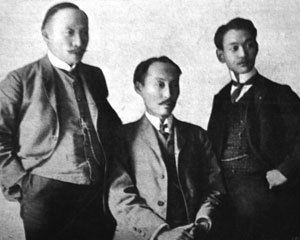Hangul 헤이그 특사사건 Revised Romanization Heigeu teuksa sageon | Hanja 헤이그 特使事件 McCune–Reischauer Heigŭ t'ŭksa sakŏn | |
 | ||
The Hague Secret Emissary Affair (Heigeu teuksa sageon, 헤이그 특사사건) resulted from Korean Emperor Gojong sending confidential emissaries to the Second Peace Conference at The Hague, the Netherlands, in 1907.
Contents
Background
Following the Taft–Katsura Agreement (1905) and Japan's victory over Russia in the Russo-Japanese War (1904–05), Japan sought to formalize its control over the Korean Peninsula. Japan assumed hegemony over the Empire of Korea with the Eulsa Treaty of 1905.
Event
Emperor Gojong of Korea sent three secret emissaries, Yi Jun (이준, 李儁), Yi Sang-seol (이상설, 李相卨) and Yi Wi-jong (이위종, 李瑋鐘) to the Second Hague Peace Convention to declare the invalidity of Japanese diplomatic maneuvers, including the Japan–Korea Treaty of 1905 (Eulsa Treaty). Gojong's representatives asserted the monarch's rights to rule Korea independent of Japan. However, the nations at The Hague did not allow the emissaries to take part in the conference and blocked this diplomatic mission.
Emperor Gojong's emissaries were unable to gain entry into the convention hall. Korea was no longer viewed as an independent nation by the nations, as Japan had assumed responsibility for its international representation.
Recision
In 1965, the treaties of Japan were confirmed to be "already null and void" by the Treaty on Basic Relations between Japan and the Republic of Korea.
In 2010, Japan argued that the chronological point of reference for "already null and void" was August 15, 1948, when the government of the Republic of Korea was established; but the Korean analysis of the 1965 declaration construes it as acknowledging the nullification of all treaties and agreements from 1904 onwards, which is consistent with the argument Yi Jun and others attempted to articulate in the Netherlands in 1907.
